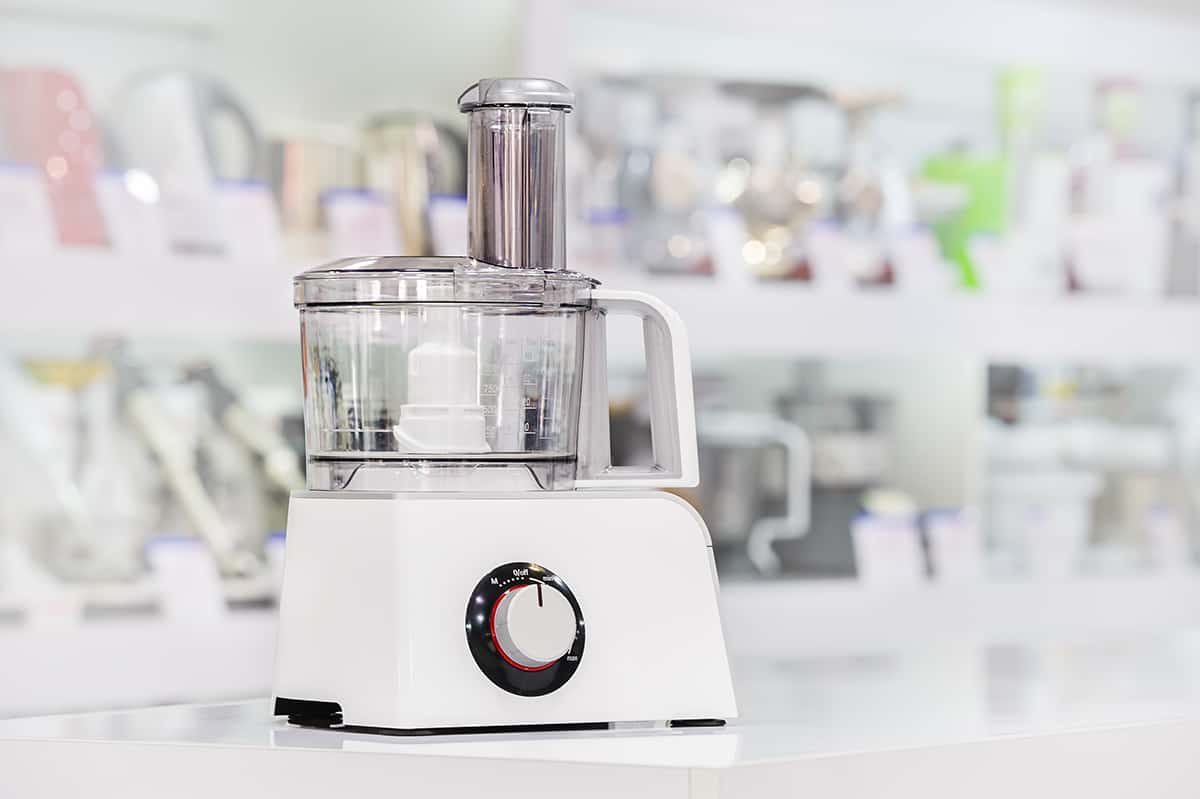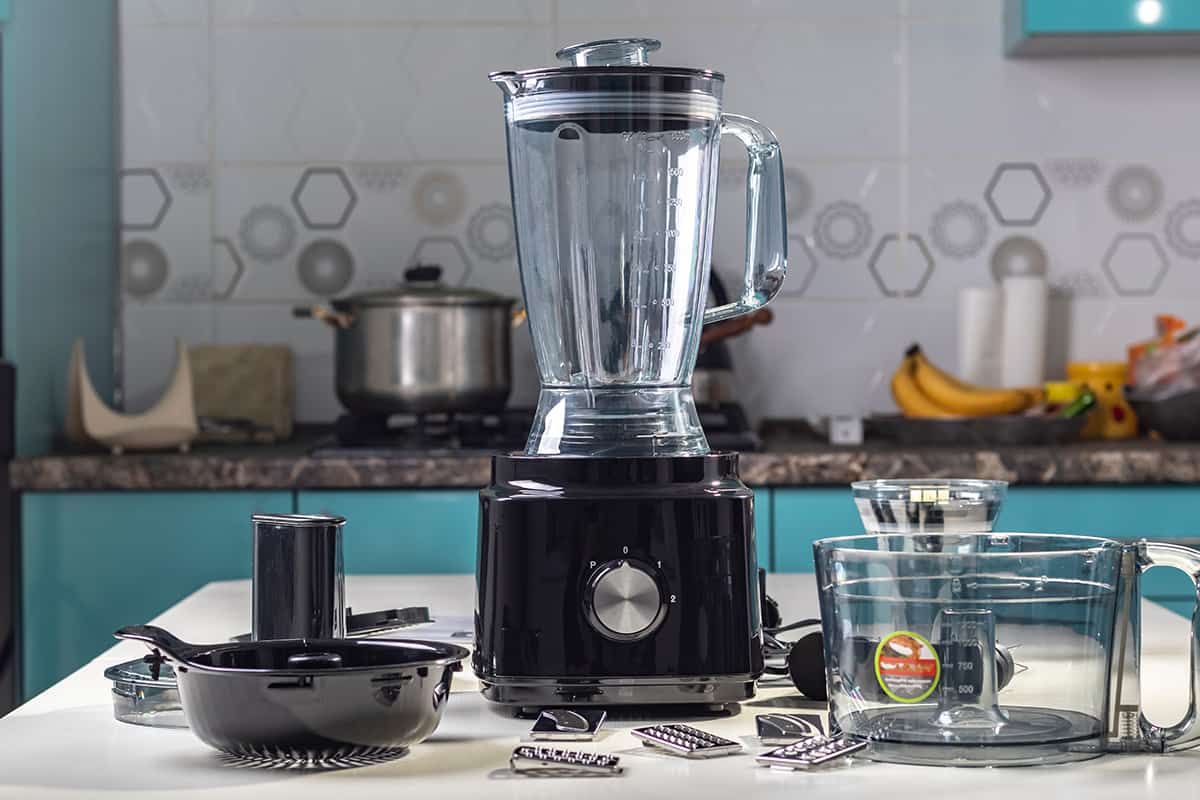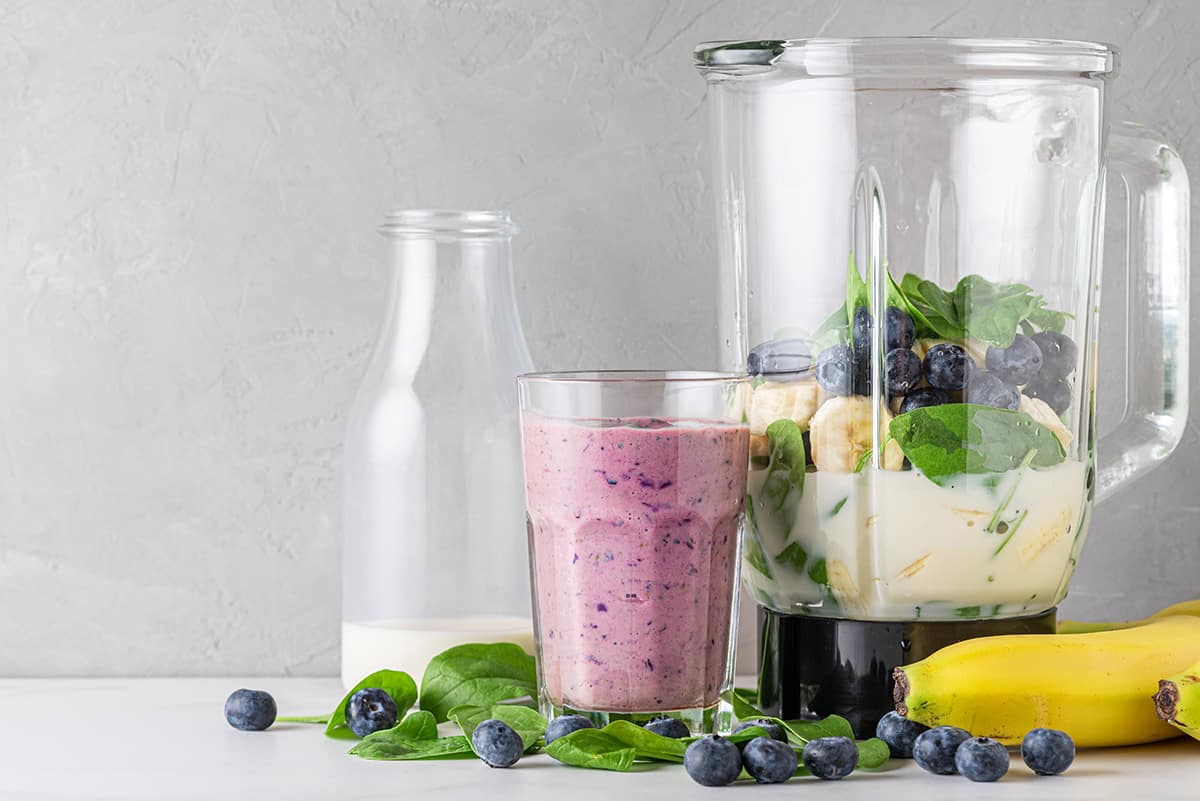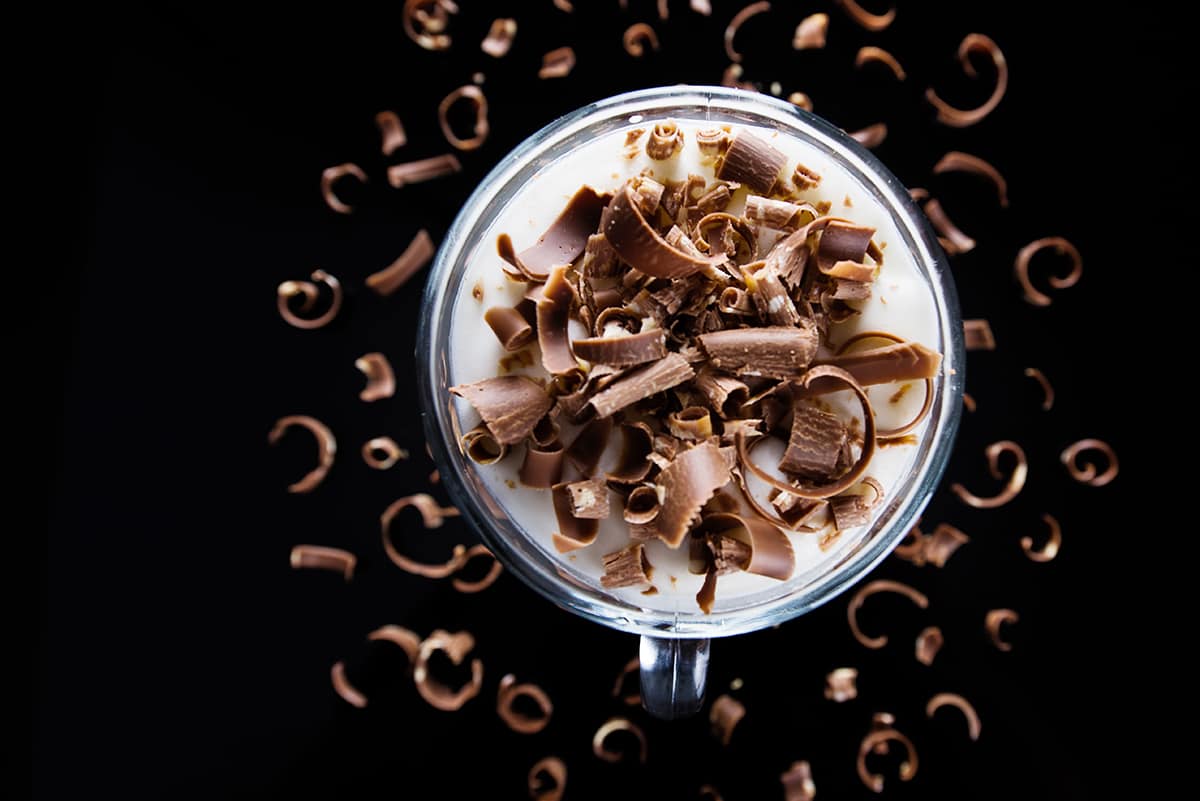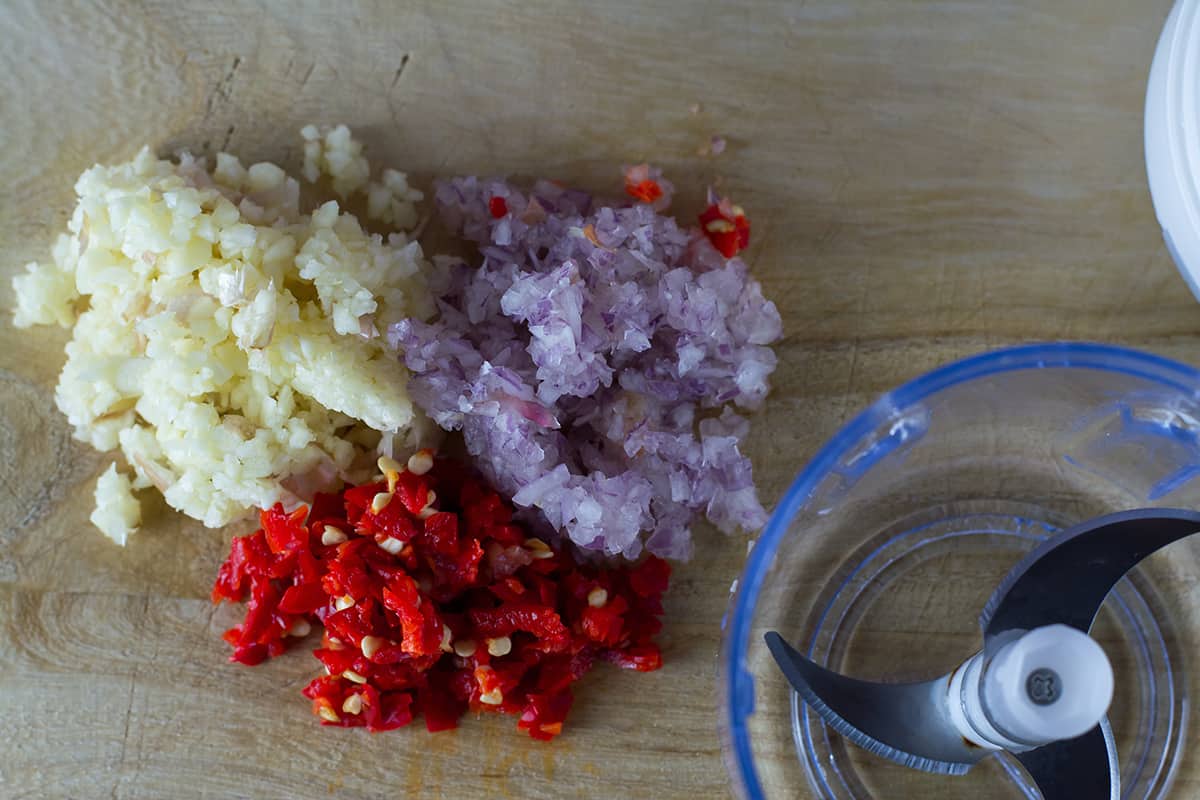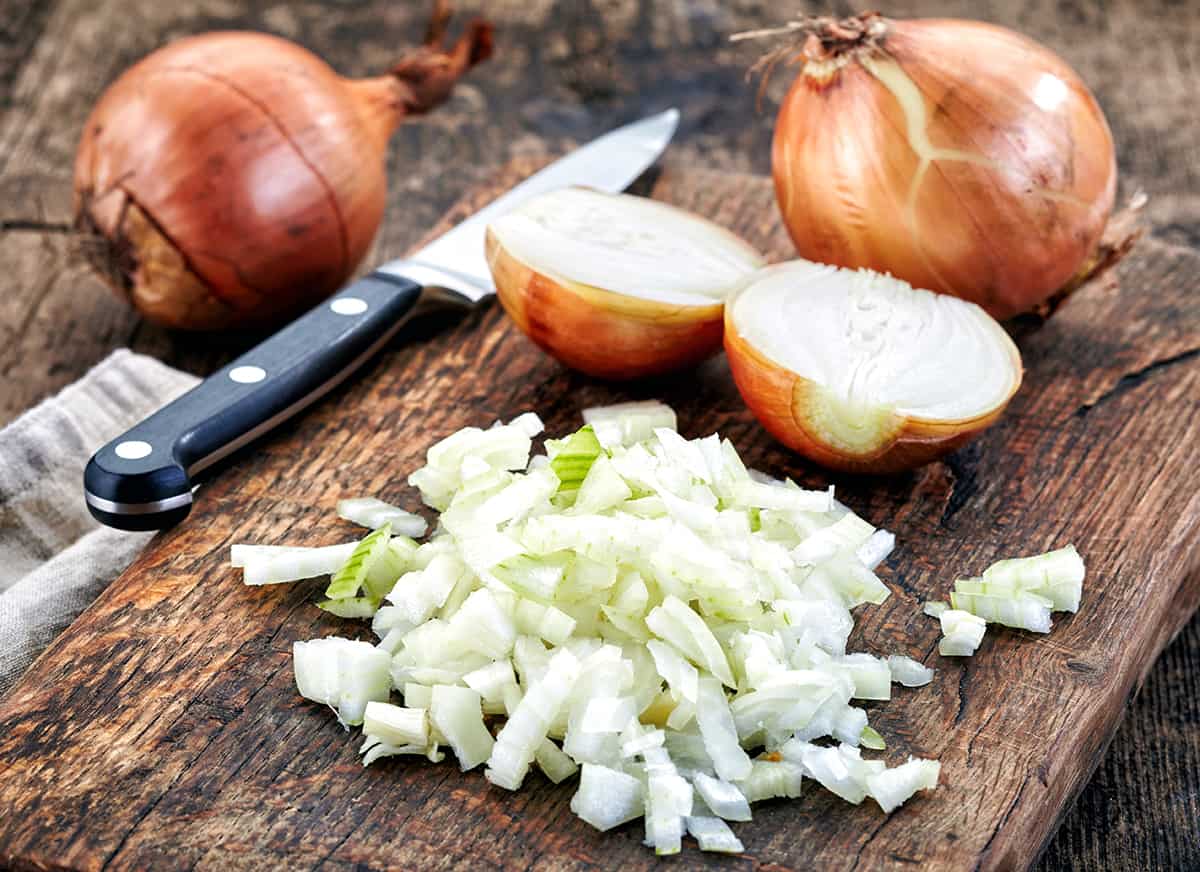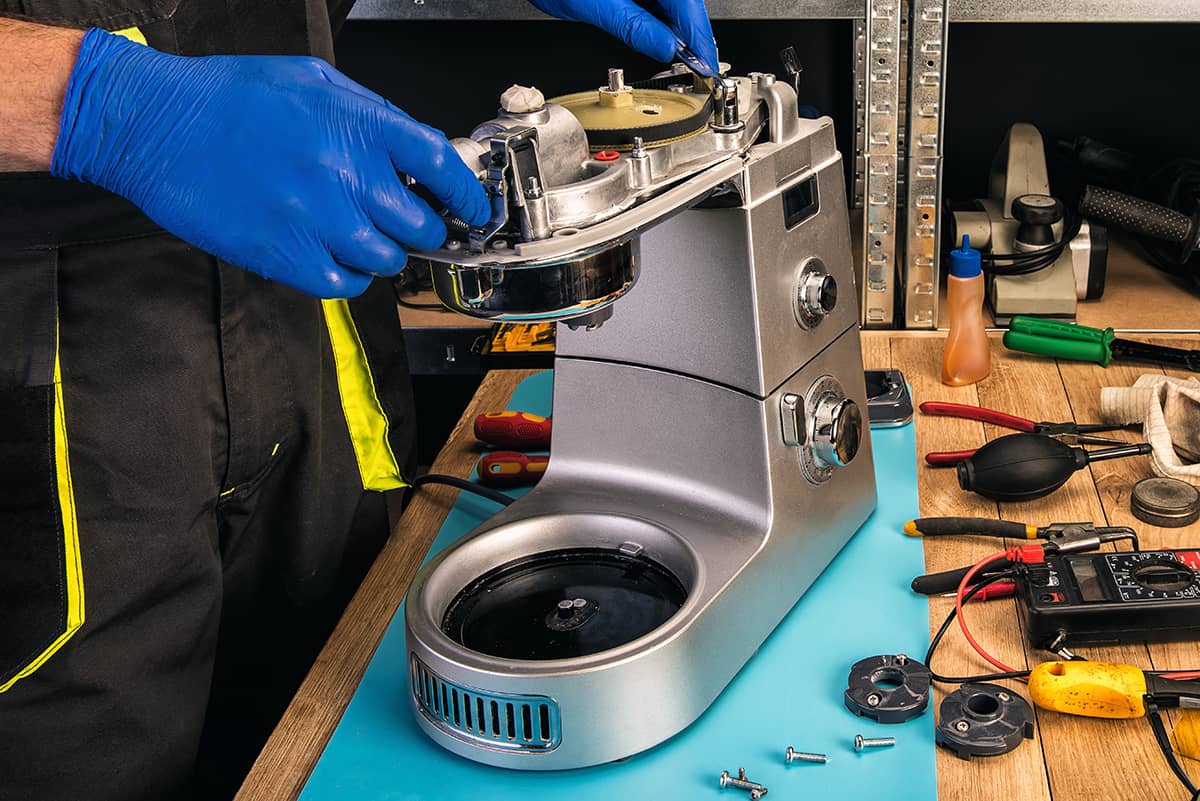Freshly prepared foods have a greater flavor and retain more nutrients. The only problem is the repetitive task of chopping and dicing ingredients, which can be a strain on the hand. That’s why many people turn to food processors, which allow them to turn cut fresh ingredients into tiny pieces for all kinds of recipes.
Food processors come in an assortment of sizes, ranging from small 3-cup models all the way up to 14 cups. However, the exact size range will vary from brand to brand.
However, it’s important to note the size difference between fresh, whole ingredients and ingredients that have been finely minced in a food processor. Below, I’ll cover the various food processor sizes, as well as provide a brief guide on how to choose the best food processor size for your kitchen.
Food Processor Sizes
The size of a food processor refers specifically to the bowl—the portion of the kitchen appliance where food is chopped by a blade. So, while food processors come in a variety of shapes and sizes as a whole unit, the term “size” will exclusively refer to the bowl’s capacity.
If you compare brands like Kitchen Aid and Cuisinart, you’ll find that they both have different food processor sizes. Both brands start with 3-cup models, but Kitchen Aid’s largest food processor caps at 13 cups, whereas Cuisinart has a 14-cup model.
That said, we can categorize their food processors by size classes, which are as follows:
3 to 5-cup Choppers
Any food processor that falls into the 3 to 5-cup capacity range will typically be classified as a chopper. What separates choppers from food processors is their lack of a feed tube, which allows you to push fresh ingredients into the bowl while blades simultaneously break it down to size.
Choppers are ideal for preparing simple ingredients are recipes, such as pureeing sauces, chopping herbs, or mincing protein for meatballs or crab cakes. There are also portable choppers that run on batteries and allow users to make granola, smoothies, or other healthy beverages and snacks wherever and whenever they want.
3 to 5-cup choppers are best used in spaces with limited storage spaces, such as apartments and dorms. At most, they can prepare a bath of entrees or delectable desserts for two people.
6 to 9-cup Food Processors
The next stage is 6 to 9-cup food processors, which can hold a larger quantity of ingredients at a time. They also come with feed tubes, so you can drop any fresh, whole ingredient you want while the blades are spinning to introduce any flavor, spice, or liquid a recipe calls for.
6-cup food processors and larger may also feature or be compatible with various chopping, pureeing, mixing, and kneading attachments. This makes them great for home cooks who wish to make breads, sauces, and drips from a single kitchen appliance.
Generally speaking, the larger the food processor is, the more versatile it becomes. Some models come with adjustable thickness cutting disks to slice root vegetables in uniform thickness.
A 6 to 9-cup food processor can be used to prepare a breakfast smoothie batch for at least five people.
10 to 13/14-cup Food Processors
Finally, we have large-sized food processors with 13 or 14-cup bowls. Basically, they can do anything a chopper or 6 to 9-cup food processor can do but in greater quantities.
While 6 to 9-cup food processors can knead dough with a special attachment, 10 to 13/14-cup food processors’ larger bowls allow for more movement and, thus, faster work times. However, their oversized bowls can be a bit cumbersome for those who only want to prepare a recipe for one or two people since they will be left with a larger bowl to clean afterward.
Basically, these large food processors are ideal for preparing recipes for larger groups of people of around ten people.
Choosing the Right Food Processor Size
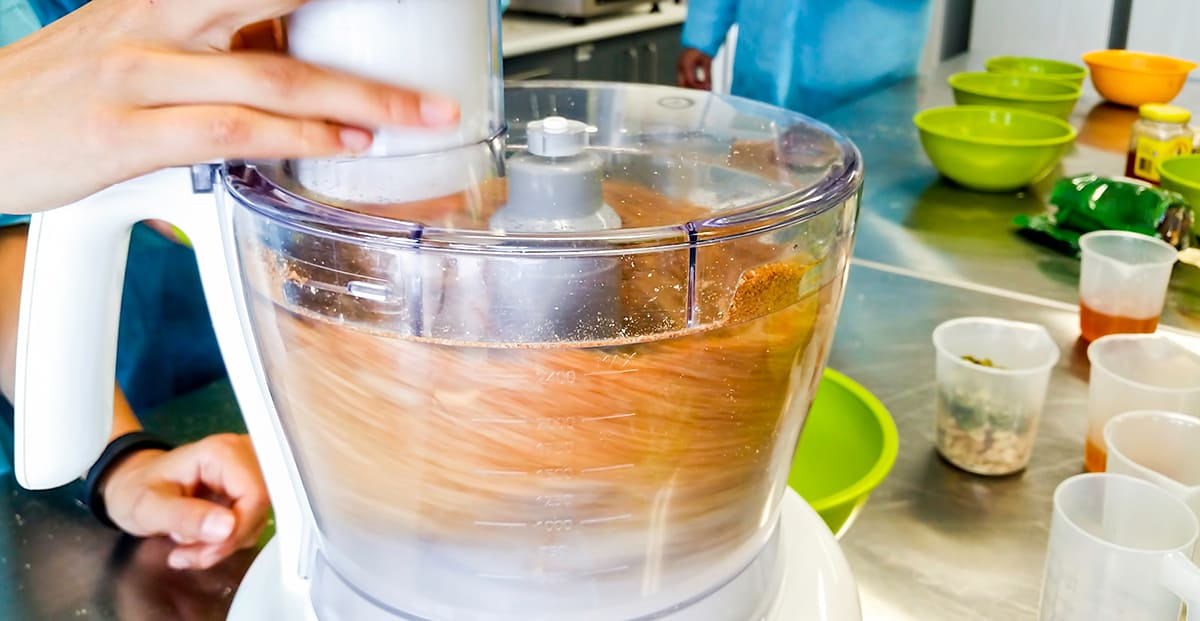
When it comes to food processors, is bigger always better? Not necessarily. However, even though the size of a food processor will speak volumes about what it can and cannot do, there is a lot more to it. Below, I’ll go over the various considerations you should take into account when shopping for the most appropriate food processor size for your kitchen.
Number of Servings
How many people do you wish to feed at once? Those living alone or with a single roommate would get the best use out of a 3 to 5-cup chopper as opposed to large and oversized food processors since they are more trouble to clean.
Storage Space
How much space in your kitchen can you allocate to a food processor? You should be aware of what size food processor will fit in your cabinets, though you can take a food processor apart to save storage space.
Cutting Modes
For the most part, 6-cup food processors and larger can do anything from chop and mince vegetables to puree smoothies. 3 to 5-cup choppers are mainly used to break large ingredients into smaller, more manageable parts for sauces, soups, or to eat straight-up. Small food processors will not come with cutting attachments to knead dough.
Is a 13/14-cup Food Processor Too Large?

Basically, large food processors are super-versatile kitchen appliances that can do anything choppers can do and much, much more. However, you will have to consider how regularly you will serve around ten people. If you don’t throw parties or if you aren’t fond of making homemade bread, then you should probably stick to a smaller food processor.
How Finely Does a Food Processor Chop Vegetables?
A very general view of how fine a food processor will prepare your ingredients is that it will break them down to half their original size.
The fineness level of a food processor’s chopping or mincing modes will depend on how long you leave the blades running. If you leave the food processor running for too long, it could break down your ingredients to a moist mush, which can be great for soups or garnishes.
